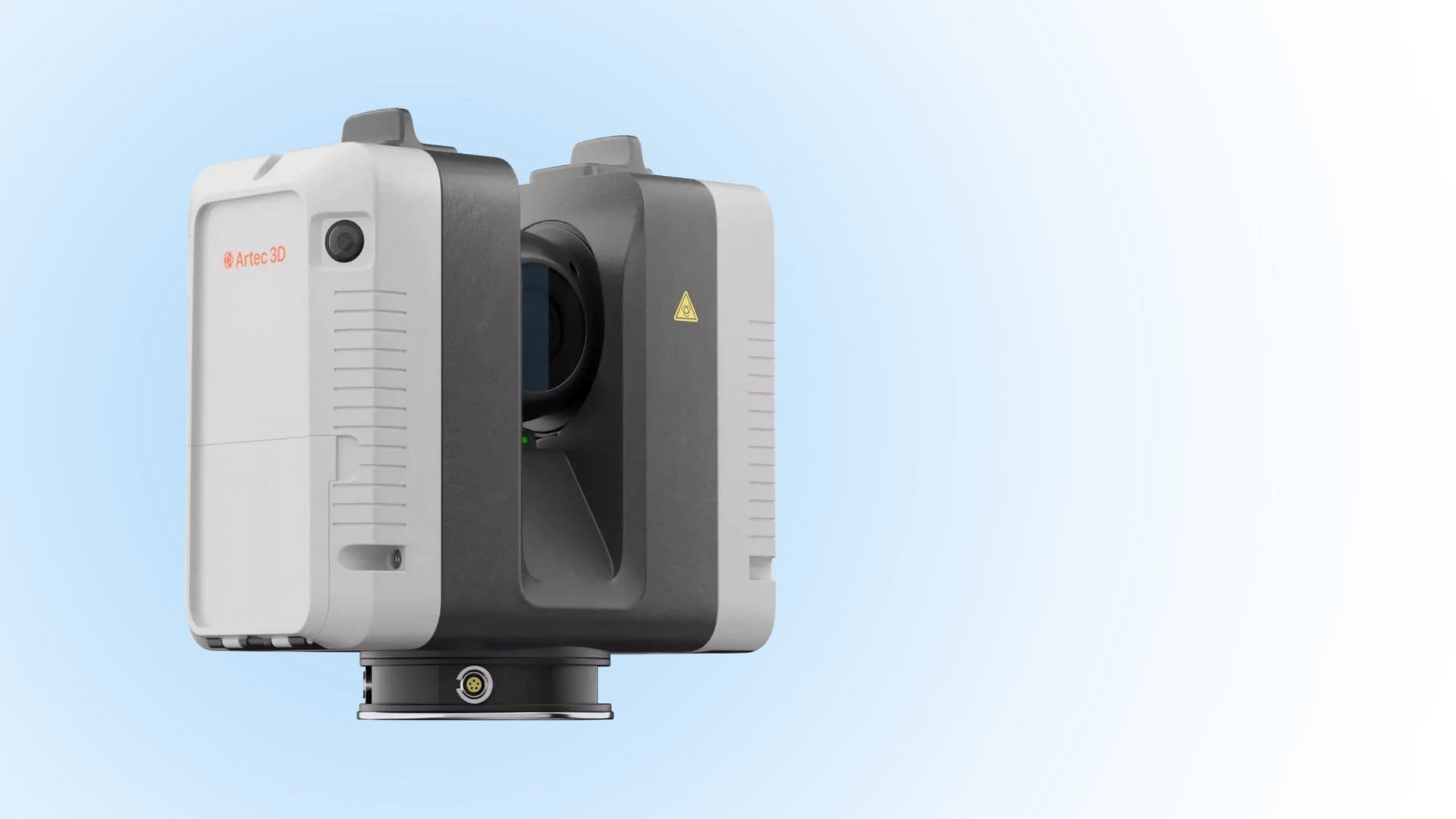
Long-Distance 3D Scanning for Infrastructure
Huge infrastructure projects present unique challenges that can only be addressed with advanced solutions like long-range 3D scanners. Whether it’s
Handheld 3D scanners are suitable for a wide variety of applications, but their primary function is to capture 3D representations of large, immovable objects and those located in hard-to-reach places. They can be used in many industries, including manufacturing, engineering, construction, archaeology and heritage preservation, medicine, law enforcement, media and entertainment, and aerospace.
Handheld 3D scanners have become very popular in the world of scanning, mainly due to their flexibility and mobility, allowing you to do scanning jobs in remote locations without worrying about limited sources of power. Knowing how handheld 3D scanners work will help you understand their uses and potential areas of application!
Handheld 3D scanners use various scanning technologies like laser triangulation, structured light, and time-of-flight (ToF) to capture shapes of physical objects and generate their digital representations. Each technology presents distinct benefits and setbacks, influencing the device’s precision, speed, and effectiveness for various applications.
Traditional, stationary 3D scanners denied experts in the scanning industry the flexibility and mobility to scan large, immovable objects. They made it particularly difficult for archaeologists to scan and generate digital models of their artifacts in their natural states because they could only be used in controlled environments like studios and laboratories.
Handheld 3D scanners can be carried everywhere, including remote sites and deep caves, allowing you to generate high-quality scans quickly and accurately. They eliminate the need for a reliable source of power because you can connect them to the available power outlet.
Handheld 3D scanners are common in many industries, including manufacturing, heritage preservation, healthcare, and education. Here are the common ways to use a handheld 3D scanner:
The manufacturing industry has benefited immensely from handheld 3D scanners due to their simple designs, versatility, and mobility. They allow manufacturers to capture 3D models of products for robot guidance, mass production, retrofitting, and quality control.
These scanners can quickly and accurately capture large and complex manufacturing components, especially in the automotive industry, where bulky and sophisticated car parts have to be scanned from multiple angles for precision.
Without handheld 3D scanners, measurements of such components would be captured manually or using the traditional, stationary scanners, which are both tedious and costly. Handheld scanners are useful at numerous stages of the manufacturing process, helping to speed up overall workflow.
These 3D scanners have become valuable assets to the healthcare industry as medical professionals have discovered ways to integrate them into their research and product development projects. For instance, healthcare professionals can use a handheld 3D scanner to do a full-body scan and use the captured data to offer tailored medical solutions.
Researchers can incorporate these scanners into medical research to monitor body changes over time or compare pre-operation and post-operation data for accuracy and quality control. Handheld 3D scanners also make developing personalized healthcare solutions and products like implants, braces, wheelchairs, and prostheses much easier, as they can capture the required data quickly and accurately for speedy manufacturing.
The uses of handheld 3D scanners in the archaeology and cultural preservation industry are countless. Previously, archaeologists struggled to create 3D models of their unique findings in undisturbed states because they had to dig up and carry the objects to the laboratory or studio for processing. Handheld 3D scanners provide the flexibility and mobility needed to capture archaeological findings at the discovery sites, allowing archaeologists to create highly accurate digital representations of artifacts.
A handheld 3D scanner can help recreate historic items from small shards discovered during excavation and create a digital museum for hundreds of exhibits. The devices have radically changed how we preserve, display, and learn our history.
From virtual reality game developers to Hollywood SFX performers and gifted art designers, professionals in the art and design industry have discovered effective ways to enhance their creativity and workflows with handheld 3D scanners. They use them to create spectacular special effects for their movies and develop immersive, highly accurate VR applications.
Handheld 3D scanners are suitable for many applications, including manufacturing, art and design, medical research and product development, and archaeology and heritage preservation. Understanding the uses as well as the pros and cons of handheld 3D scanners will help you determine the best way to integrate them into your business!
3D Scanning & Metrology News, Press, Insights, Trends, Case Studies, and more.

Huge infrastructure projects present unique challenges that can only be addressed with advanced solutions like long-range 3D scanners. Whether it’s

Different long-range scanner brands offer varying features and capabilities; hence the need to understand the most crucial aspects of long-range

The key difference between long-range and short-range scanners is the maximum distance at which they can capture data. Ordinarily, long-range

The key elements to consider in long-range 3D scanners include accuracy, scan speed, resolution, scanning mechanism, and ease of use.